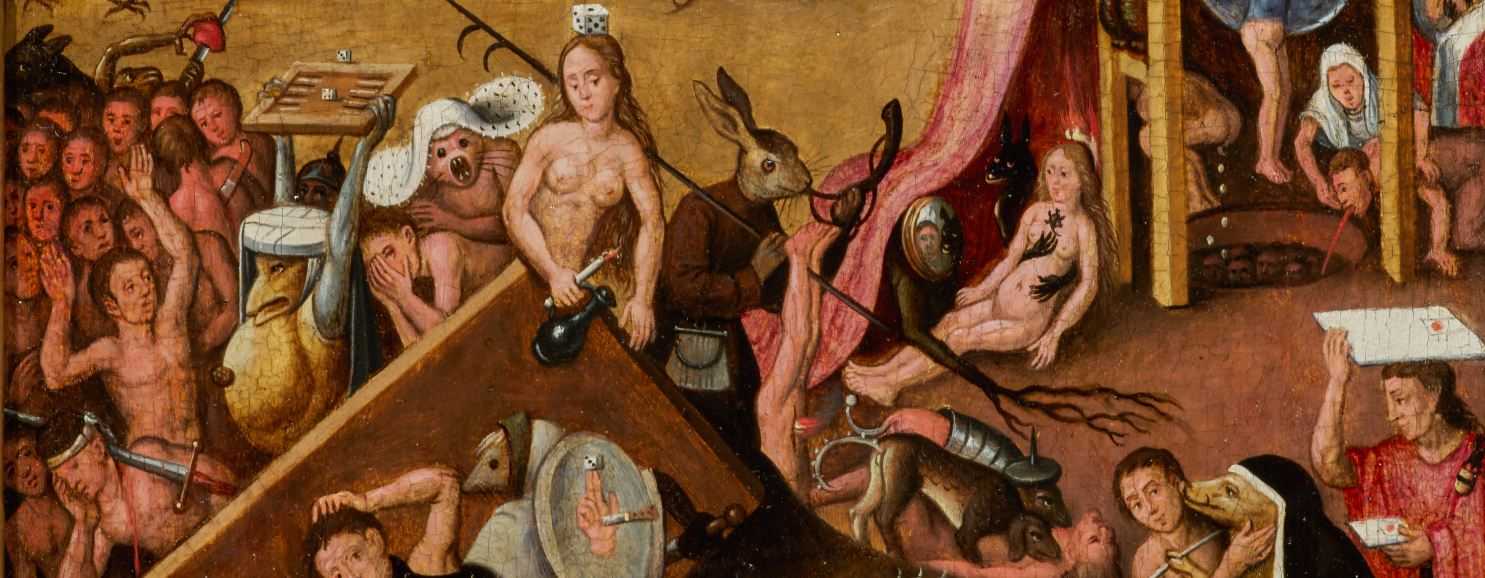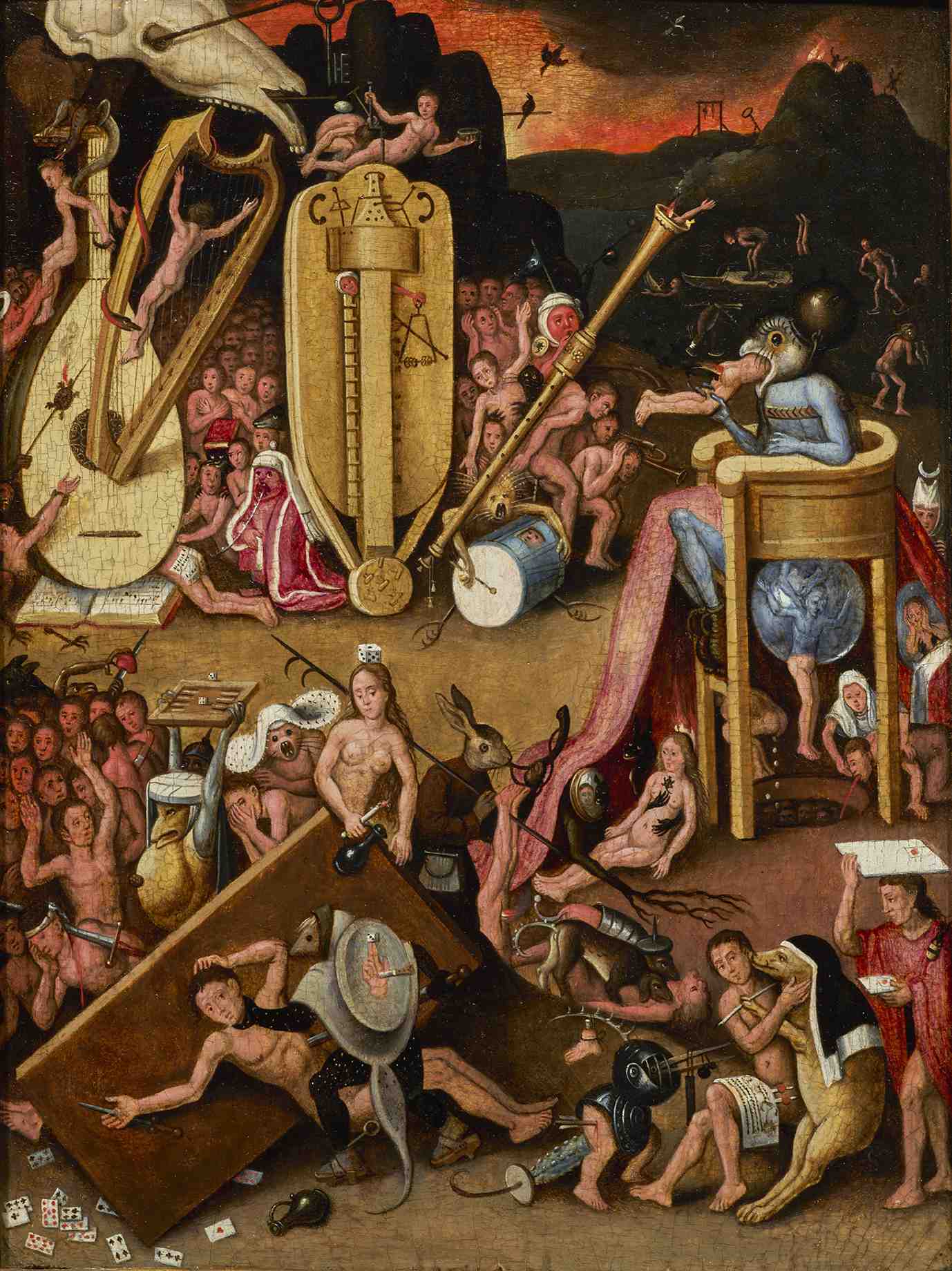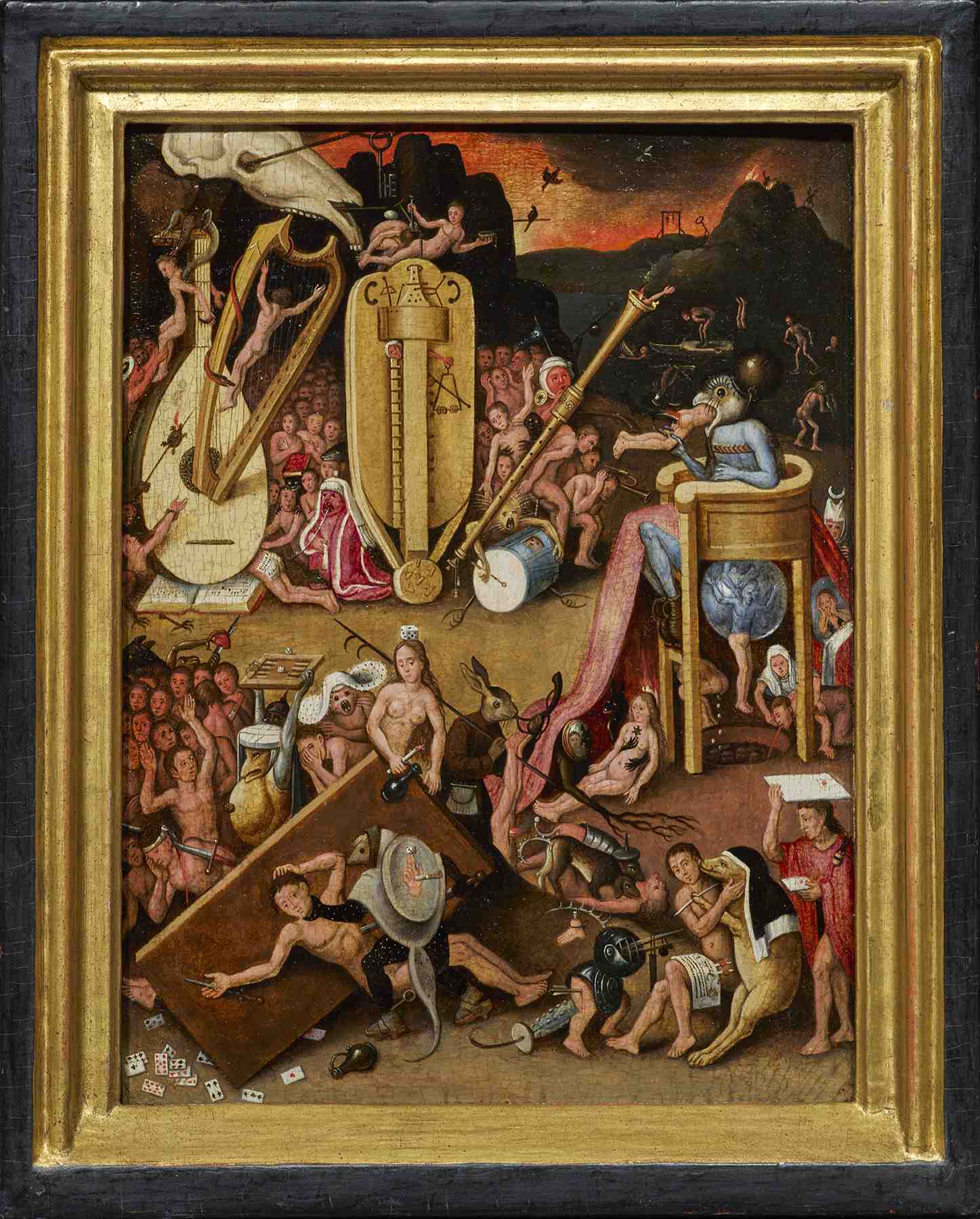Hieronymus Bosch Follower of
1450 - ‘s-Hertogenbosch 1516
The Garden of Earthly Delights – Hell
The Garden of Earthly Delights – Hell
oil on panel, 33.6 x 25.4 cm
Provenance
with F. Kleinberger, Paris and New York, by 1911;
with Paul Graupe, New York;
with Rudolf Schmuki, from whom acquired by the cousin of the present owner.
M. Friedländer, Early Netherlandish Painting, New York, 1969, V, p. 88,no. 110d.
G. Unverfehrt, Hieronymus Bosch. Die Rezeption seiner Kunst im frühen 16. Jahrhundert, Berlin, 1980, pp. 220 and 287, no. 148, fig. 219.
Additionnal Information
Hieronymus Bosch’s extraordinary pictorial vocabulary had a widely-felt impact on the visual arts that endured for decades after his death in 1516. His vividly imagined, tormented hellscapes were extensively reproduced and reworked by painters working in the Netherlands throughout the sixteenth century, and the ubiquity of his imagery was further cemented by the circulation of prints after his work.
This apocalyptic scene is taken directly from Bosch’s Garden of Earthly Delights triptych of circa 1490-1500, the early Netherlandish master’s most complex and enigmatic creation (Madrid, Museo del Prado). It almost exactly reproduces the lower half of the triptych’s right wing, which is devoted to the depiction of Hell and the punishments meted out for the Cardinal Sins, alongside various other vices that lead humanity astray from a godly life: musical instruments are transformed into torture devices, a demon holds a board game aloft and playing cards tumble from an upturned table at lower left.
After analysing the panel, Dr Peter Klein states that the earliest creation of the painting is possible from 1502, while Hieronymus Bosch is still alive.



 Facebook
Facebook
 Twitter
Twitter


 Gmail
Gmail


